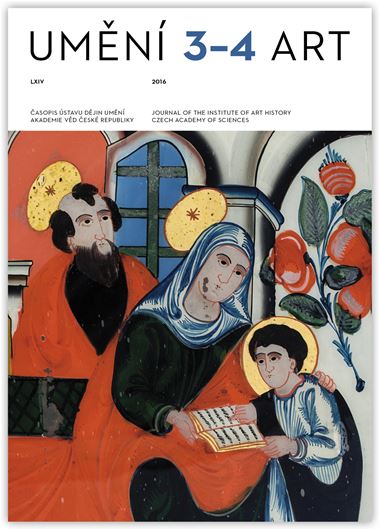Tomáš Winter
A Fascination with Folk Art. Modernism and Avant-Garde in Munich, Prague and Moscow around 1913
The article deals with the relations of the Munich group Der Blaue Reiter, the Prague Group of Fine Artists and the Moscow avant-garde in the circle around Mikhail Larionov to folk art culture. A strong fascination with folk art is apparent in all three cases: the members of Der Blaue Reiter and the Group of Fine Artists demonstrated it mainly through their interest in folk reverse paintings on glass, around Larionov it was through Russian folk prints, so-called lubki. One of the common qualities these artists attributed to the works of folk culture was a certain level of primitivism, which provided a guarantee of a desirable sense of authenticity: an authenticity of genuine, real and original work, which is not sullied by naturalism or any academic artistic conventions. In this regard it is necessary to understand their activities as part of a broader programme of primitivisim, or neoprimitivism, whose foundation enabled them to establish a new canon which the artists purposefully brought together. Primitivism and neoprimitivism legitimized their efforts in modern art because they set their work in a new historical tradition, completely different from the classical approach. Thus the concurrent response to folk art in three different places was seemingly similar in nature within the milieu of modernism and the avant-garde, as the participants shared the same general goals – the constants of modern art – which occurred in particular places no matter how different their political, social and cultural character. However, at the same time it is necessary to see the differences that the three groups demonstrated while working with folk art and using it as a source of inspiration. It is apparent that specific aspects of the various localities modified the interpretations of the art works which the individual artists felt allied with, and also some of the particular aspects of their efforts set out in programmatic manifestos.
Full-text in the Digital Library of the Czech Academy of Sciences:
https://kramerius.lib.cas.cz/uuid/uuid:23a4a83d-e93e-4f3e-be5c-978dfcfc9538
< back

